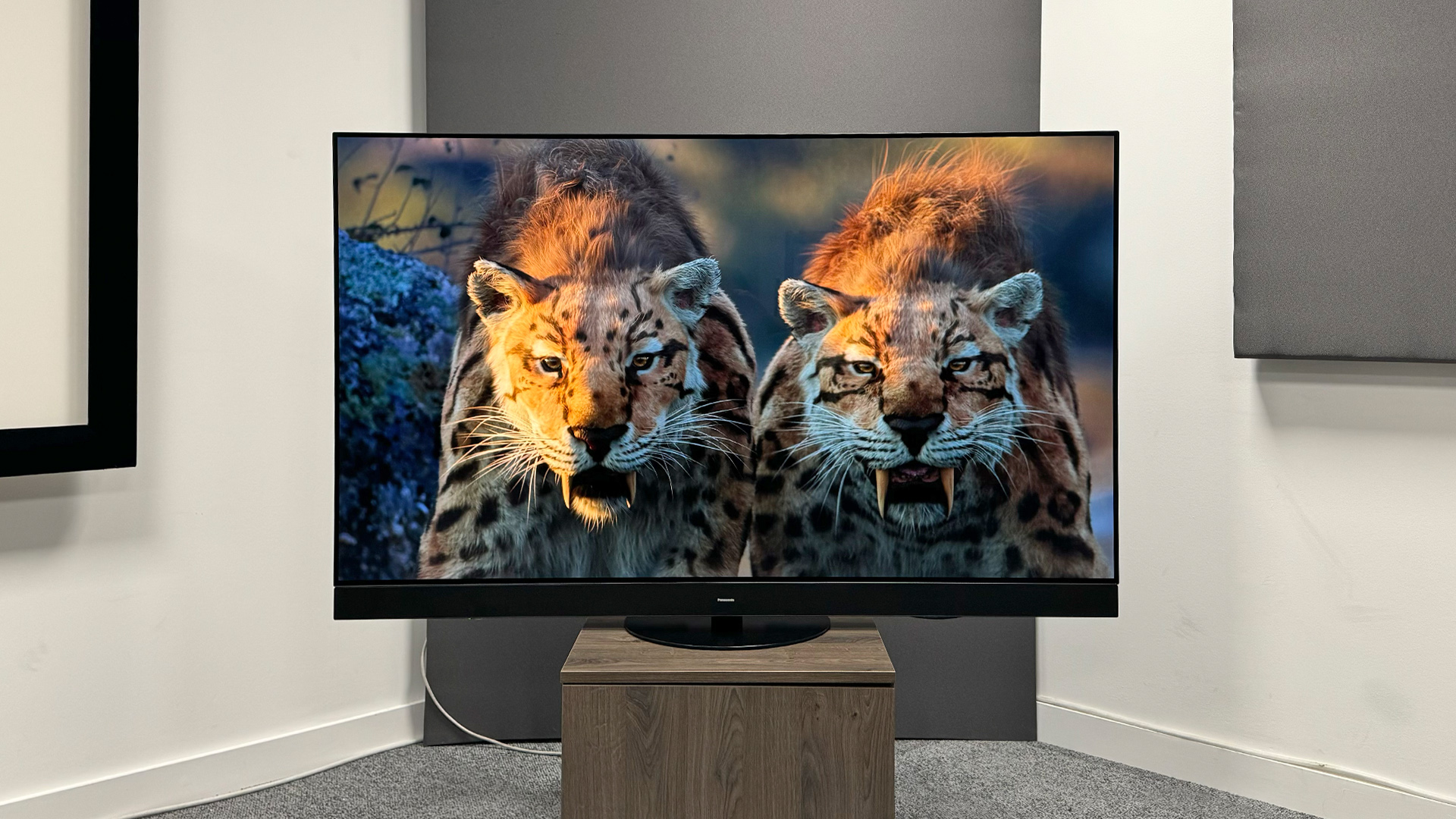
The Panasonic MZ1500 is the latest TV looking to replace the What Hi-Fi? Award-winning Sony A80L as the best OLED for most people. Featuring a solid spec sheet and offering wonderfully subtle but accurate picture quality during all our checks, it has a lot to offer and there's a strong argument that it's the best performance-per-pound model in Panasonic's new OLED range. But there are a few compromises you need to be aware of, especially regarding Panasonic’s claims about audio quality.
Price
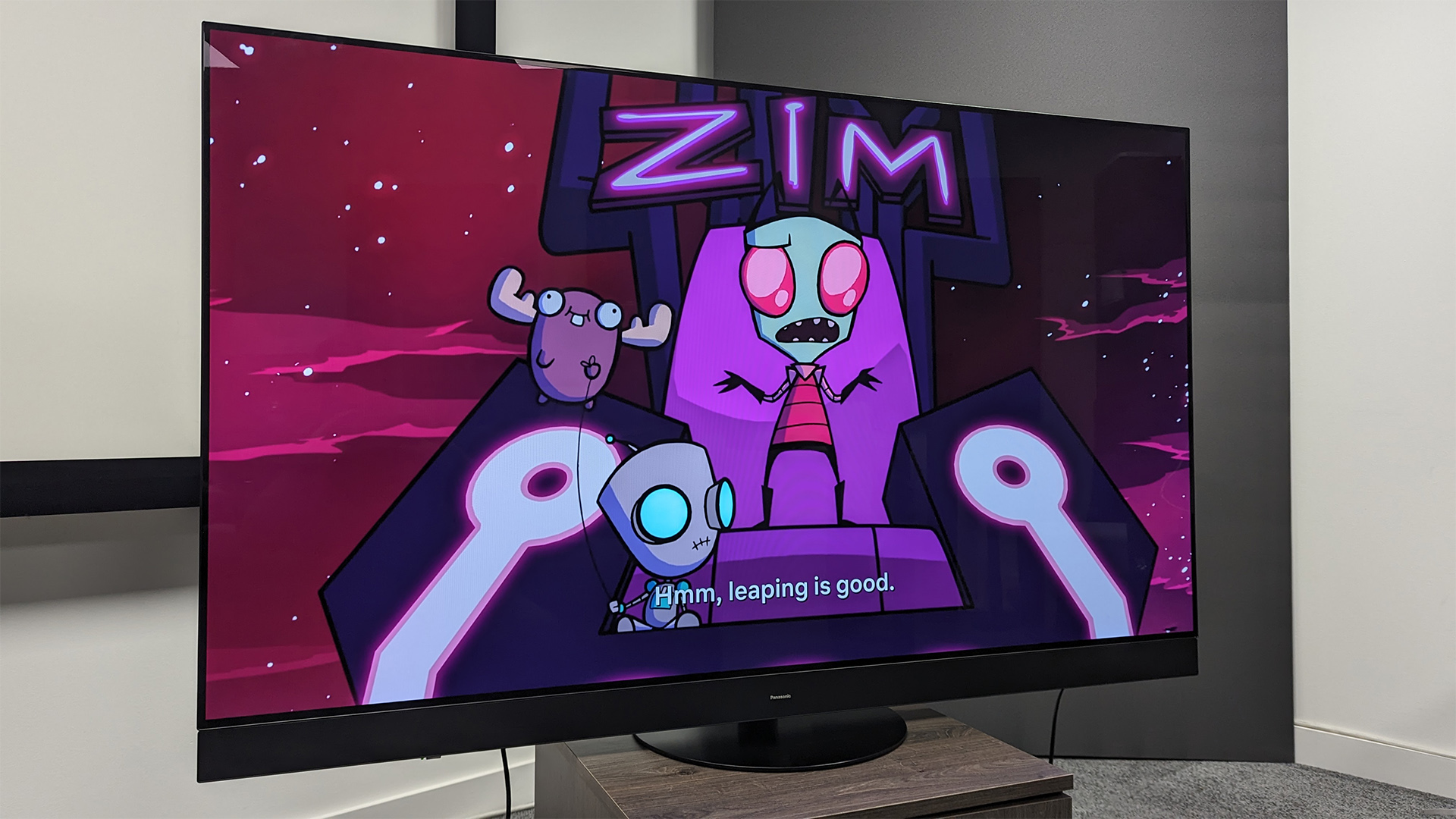
The Panasonic MZ1500 is available in 55-inch and 65-inch options. When they launched in August the 55-inch model carried a £2200 (around $2800 / AU$4100) RRP while the larger 65-inch model on test retailed for £2900 (around $3700 / AU$5400).
That made it much more expensive than the rival LG C3 and just below the Sony A80L when it comes to launch pricing.
When it first came out the LG C3 55-inch cost £2100 / $1900 / AU$3299 while the 65-inch option set you back £2900 / $2600 / AU$4299. The 55-inch A80L retailed for £2399 / $2999 while the 65-inch cost £2999 / $3700 at launch.
All three TVs have been discounted since launch, but the Panasonic MZ1500 is still the most expensive of the bunch. It’s close between it and the Sony A80L, but the LG C3 is significantly more affordable and will most likely remain so. As always, if you’re looking for a discount on any of the aforementioned sets make sure to keep an eye on our best TV deals guide, where our team of experts lists the best savings they’ve spotted on sets we can personally recommend.
If you’re choosing between the MZ1500 and MZ2000, you’re looking at a price gap of around £500 at 55 inches and a whopping £1000 at 65 inches.
Design
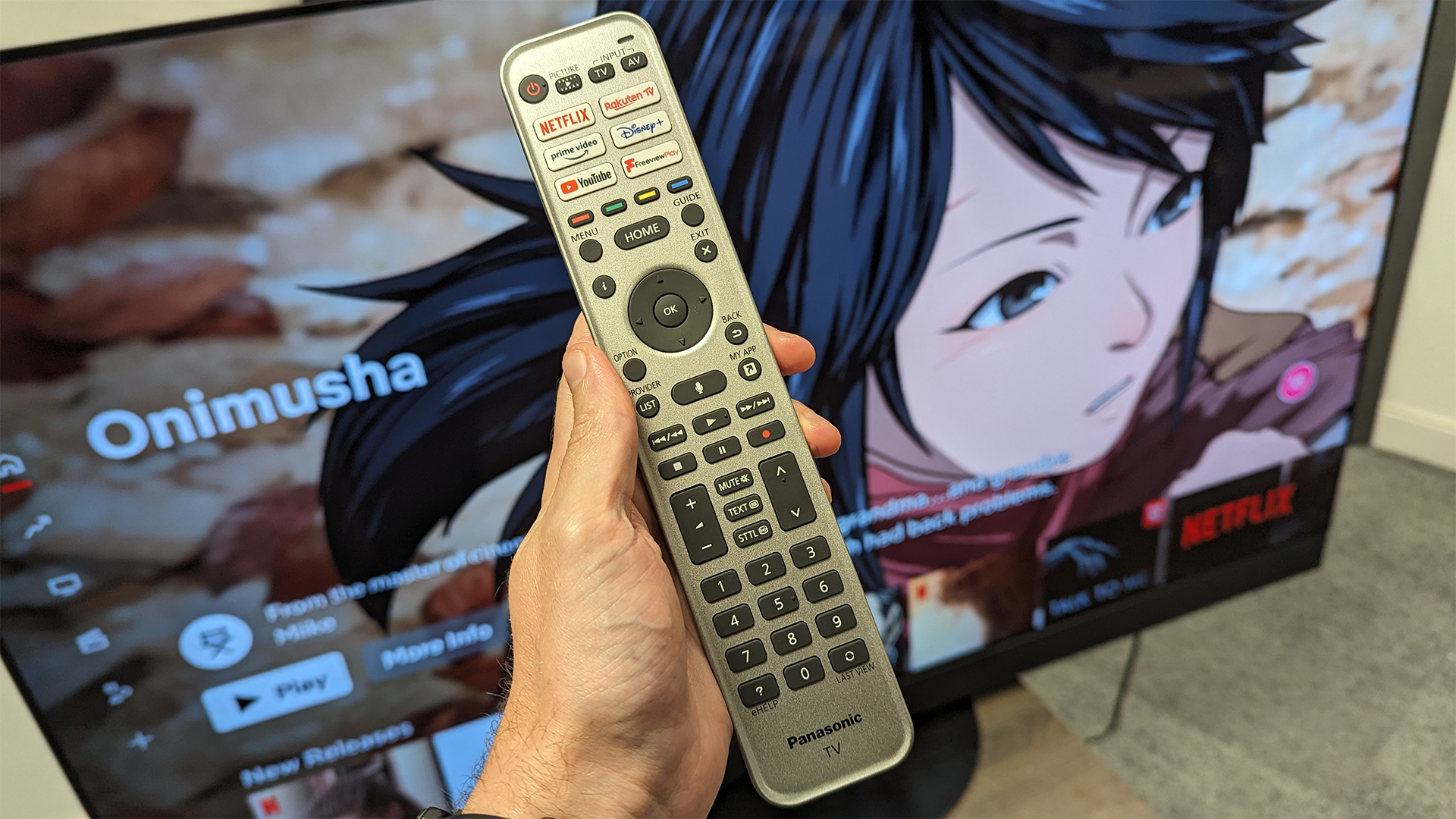
The MZ1500 looks all but identical to Panasonic's older LZ2000 and very similar to its flagship sibling, the MZ2000. This means it is a fairly chunky unit that features a dedicated speaker bar mounted beneath the screen and makes placing a dedicated separate soundbar next to impossible, due to space constraints. It’s interesting to note that the inclusion of a speaker bar for the MZ1500 is a reversal of a decision made for last year’s LZ1500, which had hidden speakers. This change will be good news for those who absolutely refuse to add a dedicated sound system but bad news for those for whom a TV’s integrated sound system is superfluous.
The only big design difference of note between the MZ1500 and MZ2000 is that the flagship model partners the low-slung speaker bar with dedicated up- and side-firing drivers.
This is part of Panasonic’s ongoing focus to create TVs that put function over form and means that if you want an almost invisible portal to the world of home cinema you’ll likely prefer the A80L, which is slimmer and undeniably less noticeable when we have the two next to each other in our test rooms.
It’s great to see the pedestal stand design we loved on the Panasonic TX-65LZ2000B make a return. The stand neatly slots into the back of the TV and is secured with four basic screws. As well as having a very small footprint that lets you easily place it on even quite small TV stands considering its size, it also swivels, making it a lot easier to adjust the screen’s angle on the fly and access the TV’s ports to swap out consoles, sound systems, and the like.
The only design feature we are a little sad about is that the remote also remains largely unchanged since last year’s models. This means it’s a fairly sizeable affair, that doesn’t have the motion controls seen on the LG C3 or backlighting of the A80L’s remote. Considering Panasonic's commitment to delivering movies in the way they were intended and that a dark room is best for picture quality, we are slightly surprised that the remote isn't backlit.
Features
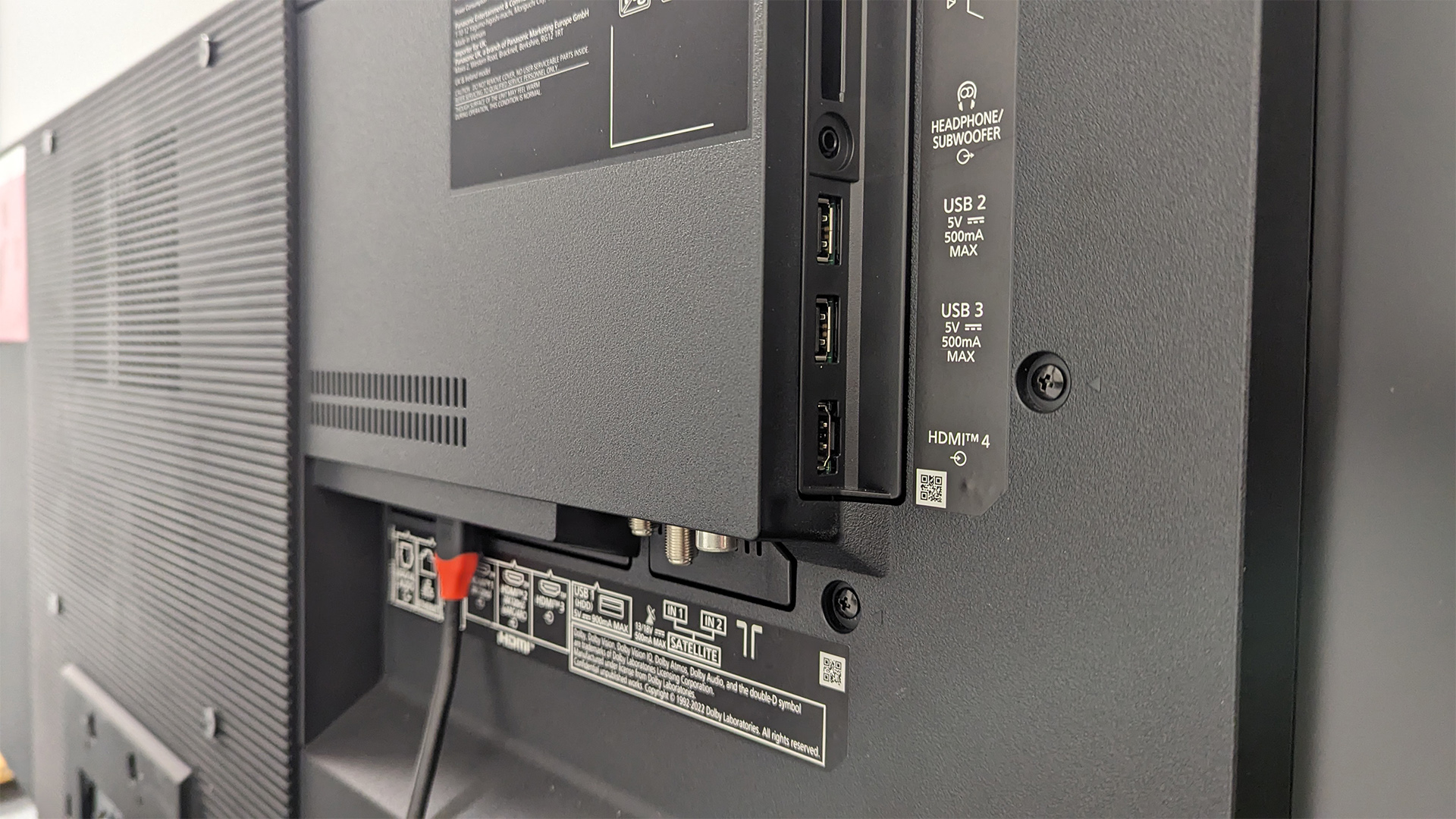
When it comes to features, the Panasonic MZ1500 is good but not the best in class in every area. The MZ1500 comes with a Master OLED Pro panel. Based on our time chatting to Panasonic reps at an earlier press demo we know the MZ1500 uses the same OLED EX panel as the LG C3. The Master OLED Pro branding refers to extra fine-tuning and optimisations Panasonic has done to try and boost picture quality in key metrics, like max brightness and colour authenticity.
However, processing, which is a key factor in TV picture quality, is handled by the same new HCX Pro AI processor seen in Panasonic’s more expensive MZ2000, and cheaper MZ980 OLEDs.
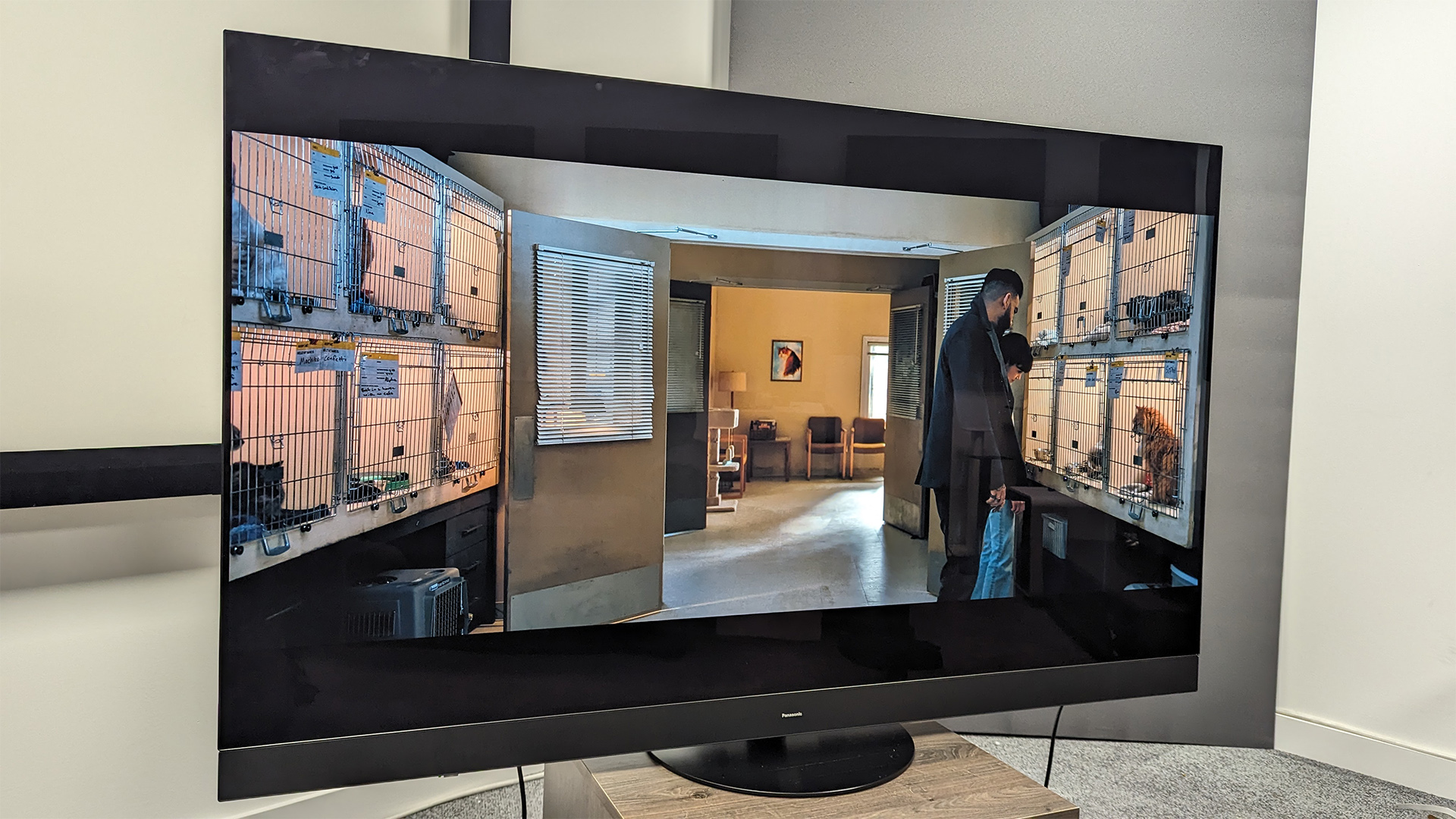
Screen size 55 inches (also available in 65 inches)
Type Panasonic Master OLED Pro
Resolution 4K
HDR formats HDR10+ Adaptive, HDR10, HLG, Dolby Vision, Dolby Vision Gaming
Operating system My Home Screen 8.0
HDMI inputs x 4 (2 x 48Gbps HDMI 2.1)
Gaming features 4K/120Hz, VRR, ALLM
ARC/eARC eARC
Optical output? Yes
Dimensions (hwd, without stand) 76 x 123 x 35cm
This is important as the chip aims to improve a key area in which Panasonic already has a strong track record – Filmmaker Mode. Specifically, the new chip aims to let the MZ1500 offer an even more realistic, “as the director intended” picture by using the processor’s advanced smarts to adapt the picture’s settings reactively to any ambient lighting in the room.
The idea is that whether the lights are on or the warm sun is blazing through the window, you’ll see the picture as intended – though we still recommend watching movies in pitch-black conditions for the best results.
HDR support is also great thanks to the inclusion of both the Dolby Vision and HDR10+ ‘dynamic’ HDR standards (as well as standard HDR10 and HLG). In fact, Panasonic has gone as far as including support for the ‘IQ’ version of Dolby Vision and ‘Adaptive’ version of HDR10+, which essentially do the automatic picture adjustments described above for Filmmaker Mode but in line with these specific HDR formats.
The aforementioned processor also brings Panasonic's advanced colour balance smarts to next-generation gaming. Specifically, it powers a new True Game Mode, which Panasonic claims will let the MZ1500 deliver “precisely” the right colour balance and contrast when gaming. There’s also source-orientated HDR tone mapping, which aims to offer more accurate HDR when running modern games.
As an added perk it also supports Dolby Vision gaming, something the Sony A80L doesn’t, but the LG C3 does.
Sadly, despite these bonuses the MZ1500 does still have a couple of issues. First, it repeats one of our biggest gripes with many flagship TVs – it only features two HDMI 2.1 sockets, one of which doubles as the eARC port. If, by some miracle, you’ve not graced the pages of What Hi-Fi? before and aren't aware of the issue here, it's that it limits the number of next-generation consoles (or gaming PCs) that can be connected in a way that maximises performance
Though the TV’s HDMI 2.0 inputs can run ALLM, the PS5, Xbox Series X/S and any PC with a modern graphics card still all need an HDMI 2.1 input to run 4K/120Hz and VRR (which makes games smoother, more responsive and generally look better, based on our testing). Any Dolby Atmos soundbar or speaker system also needs eARC, which means you can only have one next-gen console or box connected if you’re also using a dedicated sound system, which you really should when investing this much in a TV.
Our second, and only other, gripe with the MZ1500’s features is that, thanks to its use of Panasonic’s Home Screen operating system, the TV doesn’t have as good a selection of apps as its Sony and LG rivals. On the entertainment front, while you get the usual suspects of Netflix, Disney+ and Amazon Prime Video, there are some notable absences.
For a start, you get Apple TV+ rather than the full-fat Apple TV app. This means you can only stream content from Apple’s own subscription service and you can’t purchase or rent movies or TV shows via Apple’s excellent pay-as-you-go store.
There are no cloud gaming services, such as GeForce Now, Xbox or Steam Link, either. Specialist apps are also few and far between – we particularly lamented the absence of Crunchyroll and Shudder during testing.
Unlike its rivals, Panasonic’s operating system also doesn’t have a dedicated game menu, which is a little sad, as we’ve found the quick settings to be a godsend when you want to optimise your TV for Halo without digging into the exhaustive main picture settings menu.
Picture
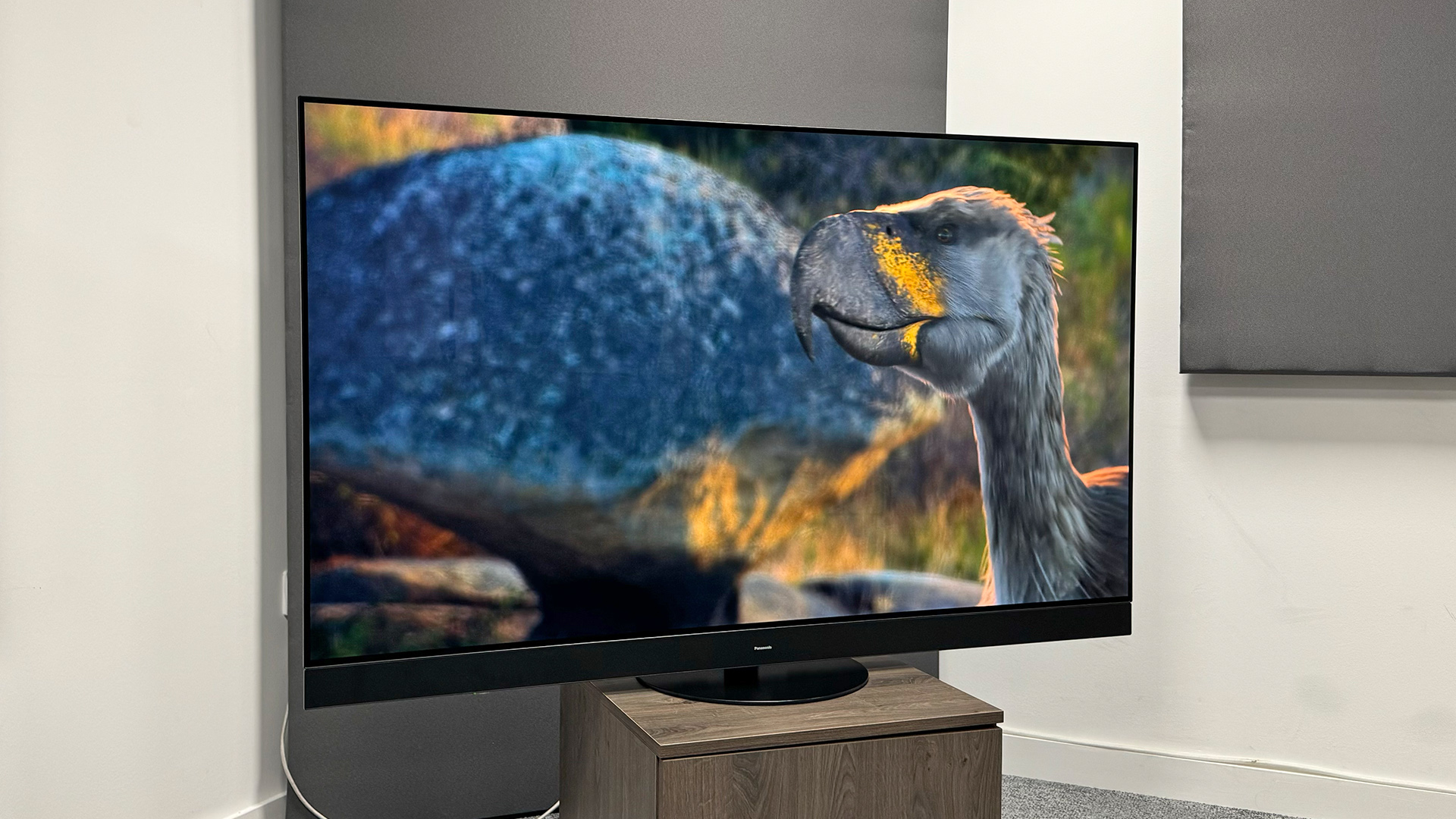
If you’ve read any of our recent Panasonic TV reviews, “balanced”, “as the director intended” and “accurate” are words and phrases we’ve consistently used to describe picture quality. Having put the MZ1500 through its paces in our test rooms against its big brother, the MZ2000, and direct rivals including the Sony A80L, we’re pleased to confirm this remains the case.
Starting with HDR10 performance, we tasked the TV with playing Blade Runner 2049 in Filmmaker Mode, which eliminates nearly all superfluous processing and offers the most authentic picture based on our testing. Here the MZ1500 offers a wonderfully accurate, subtle picture that feels truly authentic.
Whether it is the dust-filled farm in the opening scene or the neon skyscrapers of downtown LA, the MZ1500 delivers a wonderfully immersive and accurate experience. Skin tones in particular look wonderfully warm and accurate, even compared to the A80L which, despite having wonderful punch and generally appearing brighter in some instances, has a slightly cool tone by comparison. This is especially true in the opening farm scene, where Dave Bautista’s skin looks slightly blue by comparison.
This authenticity is aided by Panasonic’s reliably subtle approach to motion handling. Watching K’s flying car zoom over LA we don’t notice any of the shimmering or artificial soap opera effect that plagues many cheaper sets, or ones with more aggressive processing.
Detail levels are also fantastic. Whether it is the debriefing scene at the central police station or K enjoying dinner with his holographic girlfriend at his apartment, the MZ1500 delivers outstanding detail – every stray, dirt-covered hair and knitted pattern in his clothing remains wonderfully crisp and authentic without any whiff of artificiality. Even bright scenes that really push peak white levels to the maximum retain this wonderful level of detail.
And that’s the key thing we notice with the MZ1500: rather than push for flashy max brightness or processing tricks to catch the eye, Panasonic has once again focused on delivering a consistently authentic experience. This means you don’t get quite the same “pop” and intense contrast and peak whites seen on the Sony (or an MLA set such as the MZ2000 or LG G3), but there are benefits.
One such benefit comes to light when we switch to Pan on 4K Blu-ray – a difficult test disc because it is mastered to 4000 nits. During a particularly bright scene in which the flying pirate ship sails into the sunset, while the Sony offers more punch and noticeably higher peaks, the Panasonic delivers wonderful colour hues and retains more detail in the very brightest segments of the picture.
Dolby Vision's performance during Top Gun: Maverick tells a similar story. Despite the movie being challenging for many sets, the MZ1500 retains its colour accuracy and detail levels. Where last year’s models could occasionally make the sunkissed navy pilots look slightly like Oompa Loompas, with their skin tones having a distinctly red tone, the Panasonic offers wonderful realism – yes we know that’s an odd thing to say about a Top Gun film…
The only minor note we have is that, while the picture is impressive, the MZ1500 has a tendency to understate things, with many scenes lacking the dynamism we have experienced on the A80L, which conversely can occasionally over-hype its picture.
This is particularly noticeable when playing The Batman, a famously dark film in tone and mastering. During the iconic car chase scene, while there is a fabulous amount of shadow detail, with every subtle detail of Batman’s suit as street lamps flash through the Batmobile’s windows clearly presented, the picture lacks the same intense pop and sense of dynamism we get with the Sony A80L we run it against.
How much of an issue this is will largely come down to your personal tastes. If you value authenticity, Panasonic's subtlety is fantastic, allowing you to focus on the movie rather than the TV, but it may put off some buyers who prefer more punch.
Moving on to SDR performance with True Grit, a film that features an old-timey grainy quality, the MZ1500 delivers solid results. Colours are warm and retain an authentic feel that still holds the grainy quality intended by the director. The only minor issue is that there is an element of black crush, where some detail is lost in very dark parts of the picture, but this disc is particularly challenging in this regard and the Sony A80L fares only marginally better.
Sound
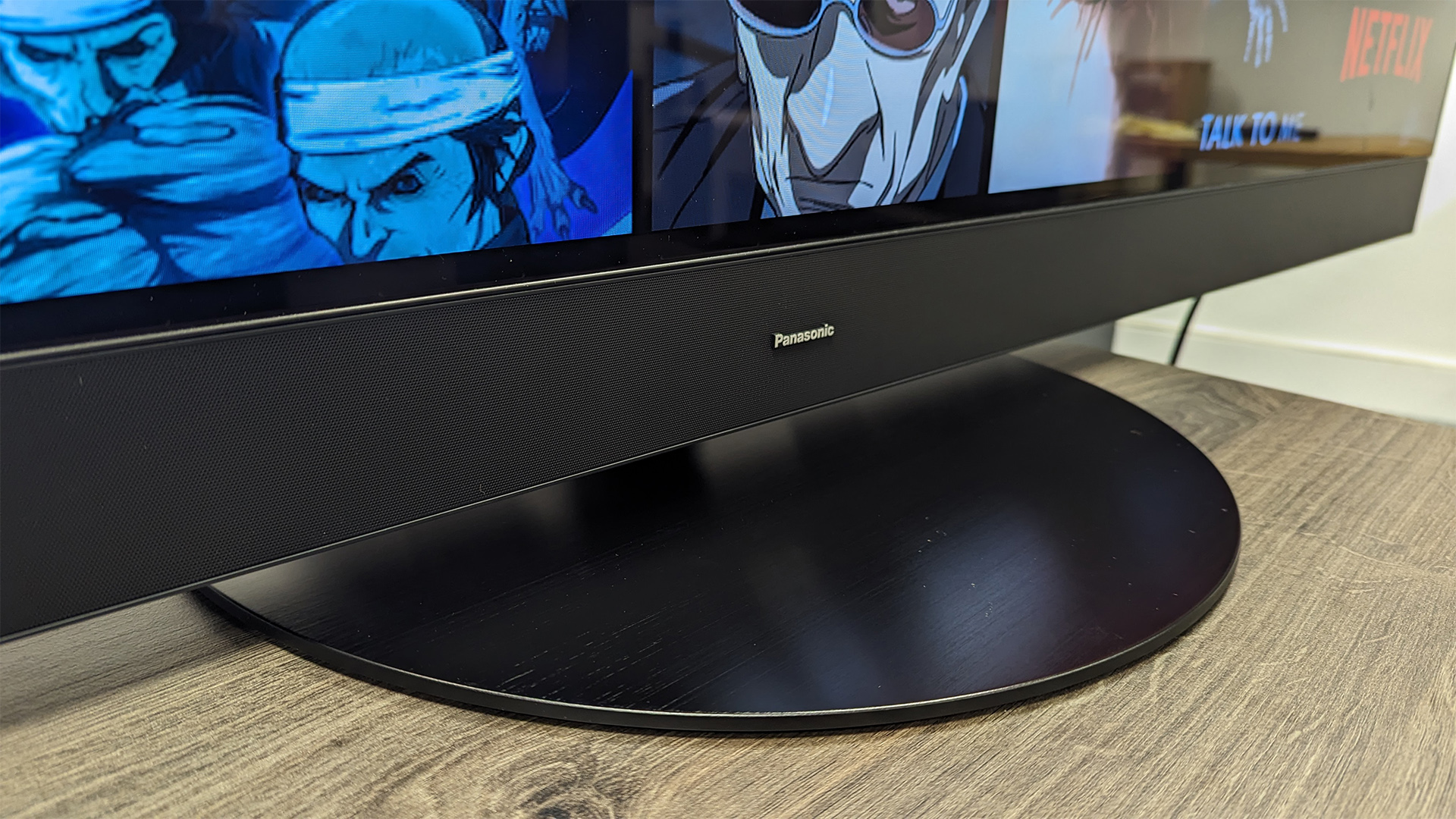
We’ve made no secret that we always recommend investing in a proper sound system or soundbar when buying a TV. And despite Panasonic’s marketing claims around the MZ1500’s audio, which directly states you won’t need a “bulky separate speaker system”, our advice is no different here.
The set comes with a stripped-down speaker system compared to the MZ2000. It features a new built-in front-firing speaker and subwoofer that aims to deliver “an immersive spatial” soundstage.
During our tests we find that, while the speaker bar is a step up on many TV speaker systems (especially the slightly weedy one featured on the LG C3), it still isn’t the best in class or a replacement for a good soundbar, let alone a full speaker package.
We start with our standard stress test, where we play the start of chapter two of Blade Runner 2049. Here, during the bass-heavy scene, the MZ1500 delivers more power and bass than both the C3 and A80L, though it still sounds strained and a slight speaker rattle creeps in. Though this sounds negative, that’s still a better performance than most TV speakers, and indicative of the fact it does indeed offer more low-end heft than its direct rivals.
This is also very noticeable during the test flight scene of Top Gun: Maverick, where Maverick zooms over the base at low altitude creating a sonic boom. The boom holds much more impact via the MZ1500, making the entire scene slightly more immersive and enjoyable as a result.
However, it doesn’t match the directional quality of its Sony A80L rival. Tasking it with the apartment scene in Blade Runner 2049 is particularly challenging as it requires the speakers to deal with hologram Joi’s disembodied voice, which jumps around K’s central audio. Here we get a much more directional quality from the Sony, with Joi’s voice holding a much more distinct place from K’s. K’s voice also feels more direct and controlled via the Sony, giving the dialogue a more immersive feel.
Outside of this, the Panasonic generally compares well with rivals, with midrange voices being notable for their warmth. We do, though notice the TV can begin to sound strained when playing intense high frequencies.
To reiterate, you will want to get an external audio system if you want the best experience possible.
Verdict
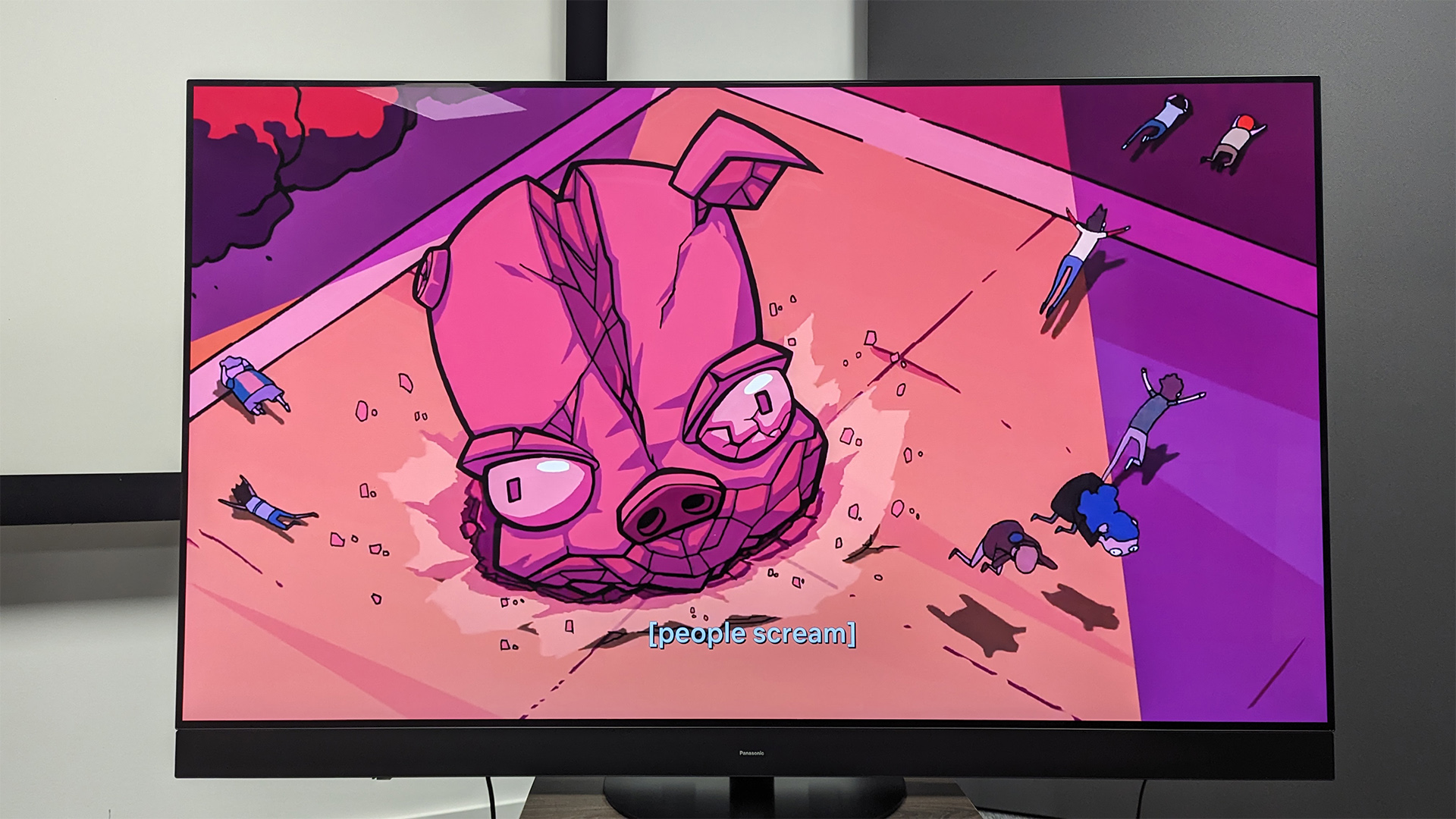
The Panasonic MZ1500 doesn’t reinvent the Japanese giant’s place in the TV market, but in most ways, that’s no bad thing.
The step-down OLED in the company’s 2023 lineup delivers the same authentic, understated picture quality Panasonic’s become famous for in recent years. During all our checks, colours and motion all hold a wonderful authenticity that makes for a wonderful viewing experience, especially if you want to experience movies as the director intended. If you’re a cinephile who cares about authenticity and can’t afford the Sony A95L or MZ2000, then the MZ1500 is a fantastic option.
However, its focus on understated authenticity means that its picture can sometimes lack the dynamism and “wow” factor you get on some competing sets. Running it head to head with the A80L, which currently costs less, the MZ1500 can in some instances look a little flat and lack the contrast and dynamism of its rival.
For gamers, the LG C3, which costs significantly less and offers very good (but not quite as excellent) picture quality, with the added perk of improved HDMI 2.1 connectivity, is another key contender that we’d recommend over the MZ1500 at its current price.
SCORES
- Picture 5
- Sound 4
- Features 3
MORE:
Read our review of the 65-inch LG C3
Also consider the Sony A80L
Read our hands-on review of the Panasonic MZ2000
Best OLED TVs: the latest and greatest models, rated and ranked







